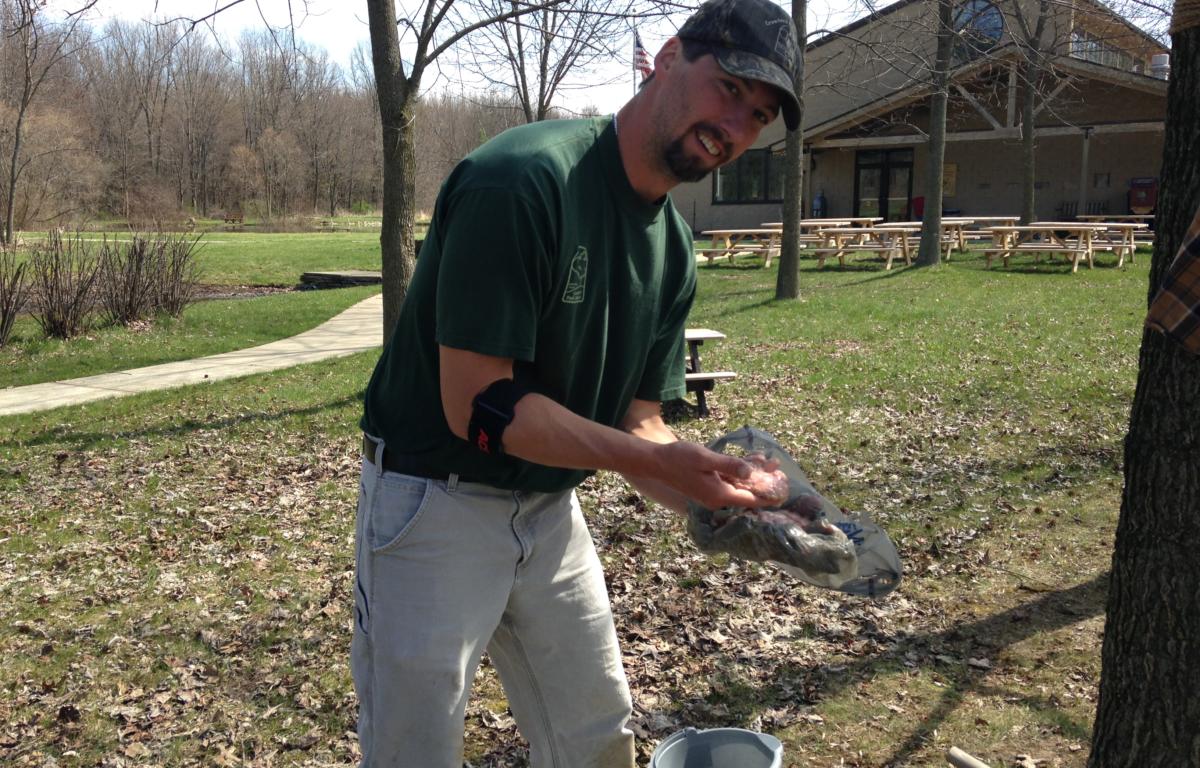By Charla Wurm
cwurm@wbcowqel.com
It may not always be easy or quick but the Crawford Park District isn’t afraid to show you how to tan your hide. The Park District held its Tan Your Hide program Saturday and Park District Naturalist Josh Dyer was on hand to demonstrate the extensive work that goes into tanning a hide.
“It’s a lot of hard work, this is not for the faint of hearts,” Dyer explained. “If you are going to do this process of tanning a hide, it takes a lot of work, it’s really rewarding because the usable piece of leather that you get from it is soft, pliable and I think anybody would be really happy about wearing something made out of a deer hide that have been brain tanned.”
Dyer and Chris Rothhaar converted a regular deer hide into a usable piece of leathers using a Native American process.
“We are demonstrating an age old method of converting a regular deer hide into a usable piece of leather using the animals brains,” Dyer said. “Today out here at Lowe-Volk Park Chris and I are demonstrating that process that the Native Americans would have done from de-hairing and doing some rinsing and then actually using the brains, soaking the hide in some brains and working and working.”
The process of tanning is quite extensive, so far hunting the deer, the real work beings. After skinning and butchering the deer, the brain is then gathered using a hacksaw. The size of the deer determines how much brains it would take to tan the hide.
After the hide is soaked in lime, it is scraped inside and out and then rinsed in flowing water or vinegar. A second rinsing takes place before the hide is soaked in brains, which contain an oil-like substance that is absorbed by the hide.
The brains are then rung out and the hide is placed into the fire. The leather can later be sewn into a coat or other articles of clothing used in reenactments.
Dyer and Rothhaar explained that hides can also be tanned by using chemicals.
The price of a tanned hide typically runs about $16 to $20 per square foot.


